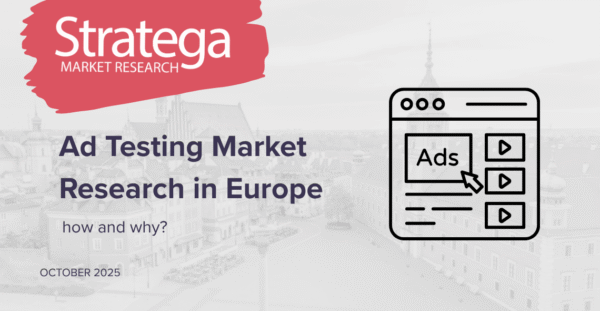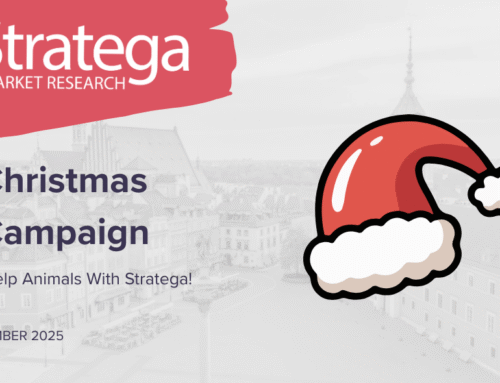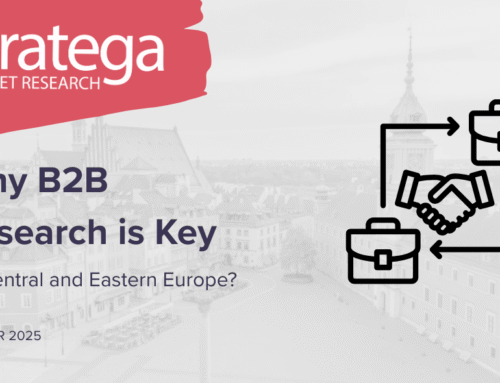Advertising is everywhere – on our phones, in the metro, even tucked into the playlists we stream. In a world flooded with messages, only some ads manage to stick. What makes some campaigns memorable while others fade instantly? The answer lies in one essential process – ad testing market research.
In Europe, cultures, languages, and media habits vary from one country to the next. Therefore, ad testing isn’t just a helpful tool – it’s a necessity. The right research ensures every euro spent on advertising brings measurable results. This method is important for successful advertising in all areas of business. It works for both big brands and local shops.
Why Ad Testing Market Research Matters
Marketing teams often fall in love with their own ideas, but the audience doesn’t always agree. And that’s where ad testing market research enters the room. It verifies assumptions before a team spends millions of dollars on a project. Testing helps brands understand how people perceive creative elements, tone, message clarity, and emotional impact.
Take a recent campaign in Warsaw for a food delivery service. The brand tested three video concepts across Polish urban audiences.
Early feedback showed that humor worked well, but only when localized. English slogans didn’t resonate with Polish audience. This insight saved the company from starting a bad campaign. It also helped them create visuals and wording that felt real for each region.
Ad Testing Market Research in Poland
Poland has become one of the fastest-growing advertising markets in Central Europe. The Polish Chamber of Digital Economy reports that online ad spending grew by almost 9% in 2024.
Mobile and social media platforms drove this growth (e-Commerce Polska). As spending increases, there is more pressure to perform. Ad testing is used more often to improve campaigns before they launch.
Polish brands tend to rely on pre-launch concept testing, copy testing, and post-campaign evaluations. While international corporations often use automated AI-based ad testing tools, local advertisers frequently combine quantitative surveys with qualitative interviews to gain cultural insights. In a country where humor, authenticity, and emotional storytelling strongly influence engagement, ad testing ensures creative ideas connect rather than confuse the audience.
The Broader European Landscape
European advertising budgets are shifting toward digital formats – social, video, influencer, and mobile advertising. The European Interactive Digital Advertising Alliance reports that programmatic and personalized ad formats now dominate online spend (EIDAA). This change has made ad testing in market research more important. Audiences see hundreds of ad variations every day.
In Western Europe, ad testing is often highly data-driven, using neuromarketing and biometric tools to assess emotional response. Central and Eastern European markets mix these new ideas with traditional focus groups and surveys. This helps them understand cultural differences better. A campaign that works in Paris might not work in Prague. This can happen if it overlooks differences in humor, symbols, or trust among consumers.
Measuring What Works: Key Ad Testing Metrics
Modern ad testing studies go far beyond simple recall or likeability. Today, researchers assess a range of performance indicators:
- Attention and engagement: How long do viewers stay tuned in? What visuals or sounds trigger interest?
- Message comprehension: Do people understand the brand promise within the first few seconds?
- Emotional resonance: Does the ad evoke happiness, trust, or nostalgia?
- Brand linkage: Can respondents recall the advertised brand?
- Purchase intent: Does the ad actually motivate action?
These insights help advertisers improve their creative ideas. They also optimize media spending by finding the formats that turn awareness into sales.
Data-Driven Creativity
A major misconception is that testing limits creativity. In reality, data often enhances it. Ad testing doesn’t kill bold ideas – it gives them second life. Creative teams can adjust messaging and visual cues while keeping the original concept intact.
A beverage company in Germany and Austria tested its ads. They found that people in each country understood their bright, youth-focused videos differently. Germans saw the humor as edgy and modern, while Austrians perceived it as slightly aggressive. With minor tone adjustments, the brand improved recall and positive sentiment in both markets.
This illustrates how ad testing empowers marketers to balance intuition with evidence. It turns creative risk into informed innovation.
Recommended Research Methods
The most effective ad testing market research in Europe blends qualitative depth with quantitative precision.
Quantitative Approaches
- Online surveys and panels: Allow for large-scale testing of visuals, taglines, or video ads across demographics.
- A/B testing: Measures how alternative versions perform in real environments (e.g., click-through rate or view duration).
- Implicit association tests: Reveal subconscious reactions to brand elements or tones.
Qualitative Approaches
- Focus groups: Provide nuanced feedback on humor, cultural fit, or emotional connection.
- In-depth interviews: Explore consumer attitudes and associations beyond surface reactions.
- Eye-tracking and facial coding: Used increasingly in Western Europe to gauge real-time emotional response.
The Hybrid Model
Quantitative tools provide scalability and speed, while qualitative methods add context. Combining both approaches ensures campaigns are both optimized statistically and culturally relevant. For brands entering Central or Eastern Europe, understanding cultural cues is very important. Hybrid ad testing gives a strong edge in this market.
The Role of AI and Automation
AI-driven ad testing tools are transforming the research landscape. Platforms like Kantar Marketplace and Ipsos Creative Spark use machine learning to predict ad success. They do this by looking at facial expressions, feelings, and past results. This allows faster decision-making and real-time optimization.
However, technology is not a substitute for human interpretation. In regions with complex cultural dynamics, such as the Balkans or the Baltics, local expertise remains crucial. Automated platforms can identify patterns, but understanding why an audience reacts a certain way requires qualitative context.
Insights from European Ad Testing
Several European studies reveal how consumer attitudes toward advertising are evolving:
- A 2023 report from Nielsen Europe found something interesting. Ads that focus on authenticity and local identity perform better. They are 27% more effective in recall and purchase intent.
- Research by Ipsos in the UK found that emotional storytelling is the best way to make ads memorable.
- A Deloitte study on digital advertising effectiveness highlighted that cross-platform consistency improves brand trust by 22%.
These findings highlight an important lesson: good ads are not only creative. They also undergo testing, validation, and ensure cultural relevance.
Opportunities for Brands
Ad testing market research gives companies the clarity they need to reduce waste and increase ROI. Instead of relying on guesswork, brands can:
- Optimize creative direction before investing in large-scale media.
- Detect regional preferences early and adjust content for better resonance.
- Strengthen communication strategies and brand positioning across markets.
For marketers managing pan-European campaigns, this level of insight is invaluable. What works in Milan may not resonate in Budapest. Ad testing bridges that gap.
Ad Testing in Central and Eastern Europe: Local Insight as a Strategic Advantage
In Central and Eastern Europe, ad testing has become more than just research. The region has many cultures, languages, and a mix of old and new media habits. This means that one creative idea may not work well everywhere.
A campaign that feels inspiring in Berlin might seem too formal in Bucharest. Humor that works well in Warsaw could fall flat in Zagreb. Local context shapes emotional connection, and ad testing is what reveals those nuances before a campaign goes live.
Smart advertisers treat the process as part of creative development, not just validation. Testing early helps teams change the tone, message, or design to fit local preferences. This way, they can stay true to the brand’s main idea. Small changes like a color shift, different pacing, or localized storytelling can significantly improve recognition and engagement.
In this region, mobile-first audiences are the norm, and attention spans are short. Ads need to communicate clearly, visually, and fast. Pre-launch testing is very valuable. It helps marketers find out which visuals or messages grab attention and which do not.
For brands moving into Central and Eastern Europe, ad testing helps make sure campaigns are creative and trustworthy. The most effective communication feels native to each market – authentic, culturally tuned, and emotionally relevant. In this environment, testing doesn’t limit creativity. It gives it direction.
Want Local Insight You Can Trust?
If you’re planning market research in CEE, don’t rely on assumptions. Rely on a team that knows the markets firsthand. At Stratega CEE, our approach is personal, precise, and proven.
Learn more about our Market Research Services CEE and let’s explore how we can support your growth in the region.





